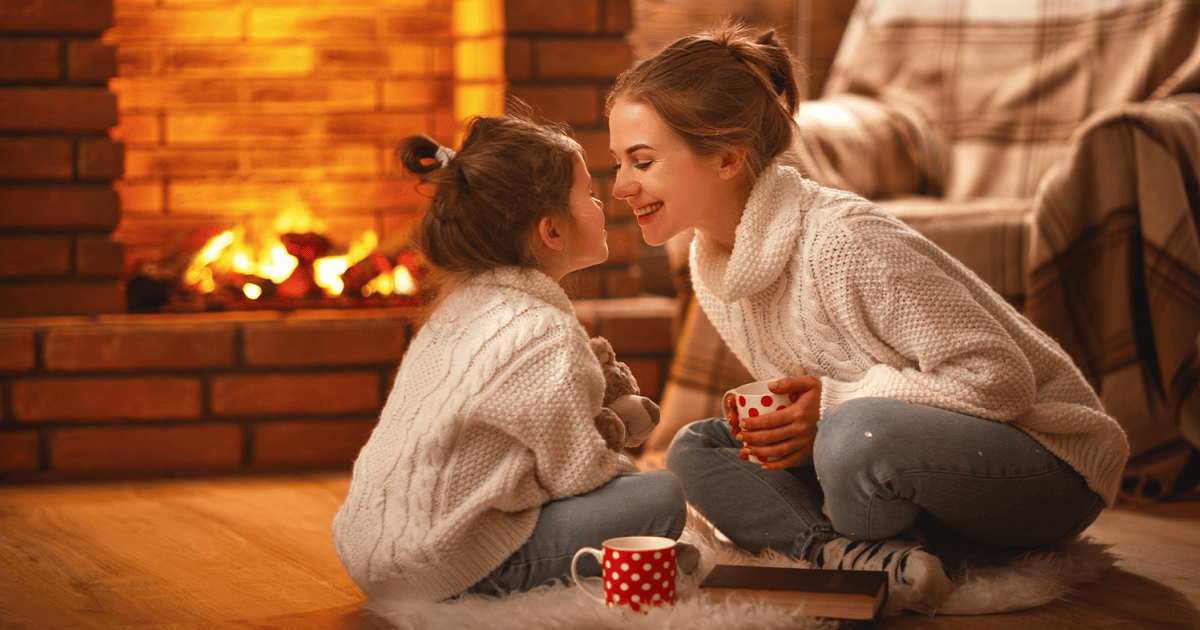6 Sizzling Fireplace Safety Tips for Families
WHAT YOU'LL LEARN
The safest wood to use for a healthy fire
Why you never leave a fire unattended
Tips for cleaning your fireplace
WHAT YOU'LL LEARN
The safest wood to use for a healthy fire
Why you never leave a fire unattended
Tips for cleaning your fireplace

Cold, wintry weather is right around the corner. That means it’s almost time to warm up our homes again with blazing fires inside our crackling fireplaces. But we shouldn’t compromise caution for comfort this season. Check out these six sizzling fireplace safety tips for the perfect soothing (and safe) environment.
1. Use Dry Wood
Using dry and well-aged wood is necessary for building a safer, longer-lasting fire. Fires made with damp or green wood, meaning recently cut logs that haven't had the chance to dry, extinguish faster and lead to excessive smoke. They can also build up creosote, a refined wood tar, in your chimney. Dry hardwoods, such as oak, maple, or cherry, generally burn for longer and produce more heat – especially if you've seasoned them for six months or longer.
Season firewood by stacking it in a location where it can get warmth from the sun while still receiving air circulation.
2. Sweep Ashes Regularly
As temperatures drop lower and lower, you might be racing to fire up your fireplace. But if you want to keep your fireplace or furnace running in tip-top shape for the many falls and winters to come, remember to sweep out previous fires’ ashes before igniting your next one. Ash accumulation can result in restricted airflow and increase the risk of chimney fires.
Once enough time has passed since you put out a fire and the ashes have cooled (say 24 hours), use a fireplace shovel to scoop up the debris and place it in a metal container. Dispose of the ashes outside, away from any combustible or flammable objects. Of course, make sure the ashes are fully extinguished before dumping them in a moist area away from grass and weeds.
3. Install a Safety Screen
Installing a safety screen will significantly reduce the chance of wayward sparks burning your child. Any metal or glass on your fireplace can heat up quickly and stay hot well after it's turned off, especially on gas fireplaces. The barrier will protect your children and pets from harm if they accidentally touch the fireplace while it's in use.
Many older gas fireplaces don't have safety screens, so measure your fireplace and hit up your local hardware store or online retailer to pick up yours today. Installation is easy and likely won't require the help of a professional.
4. Avoid Using Chemicals
While it may be tempting to use lighter or charcoal fluids to start your indoor fires, remember that they’re designed for outdoor fires and contain methanol and petroleum-based chemicals. Using them indoors can release toxic fumes and spawn uncontrollable fires. Kindling, newspaper, or fire-starter sticks are much safer, environmentally friendly methods for starting your next fire.
And for that matter, it’s also best to avoid lighting charcoal in your fireplace. You may use it in the barbeque outside during the summer, but it releases carbon monoxide into your home's air.
5. Never Leave a Fire Unattended
When you're enjoying a nice, toasty fire in the fireplace, everything may seem peaceful. So peaceful that you could drift off to sleep for a couple of hours. Yeah, that’s a no from us, dawg.
We don’t need to tell you that fires can be extremely dangerous if you’re not paying attention. But even if you only leave the fireplace for a short time (maybe you’re cooking dinner or you’ve got a quick errand to run), bad things can happen. Sparks could fly out and start a fire somewhere else in the room. The fire could also get out of control and spread quickly, causing a lot of avoidable damage or potential bodily harm. Don’t let grandma’s woven wool blanket go up in flames! Keep a watchful eye on your fire at all times.
6. Keep a Fire Extinguisher Nearby
No matter how prepared you are, accidents can happen. Because fires can be so unpredictable, we recommend keeping a fire extinguisher somewhere in the vicinity of your fireplace. Whether mounted on an adjacent wall or stored in the nearby kitchen, its location should be visible, accessible, and in the normal path of travel of anyone who enters your home.
Make sure the extinguisher is in working condition and spend some time having your whole family familiarize themselves with it. That way, if an accident does occur, someone can take action quickly before things get out of hand. Remember, safety is always the top priority when it comes to fires – especially in our homes.
Fireplace Upkeep
Finally, another fantastic way to keep your fireplace in tip-top shape is to clean it regularly. Ideally, cleaning your fireplace after each use would be best, but we know that’s not always possible. Remove soot and debris and brush off the grate, walls, and irons (the bars that support the wood). You can go the extra mile by scrubbing the interior with a cleaning solution and wiping glass walls down with a glass cleaner if your fireplace has them.
But what is a fireplace without the perfect home to house it? Reach out today for all your mortgage needs!